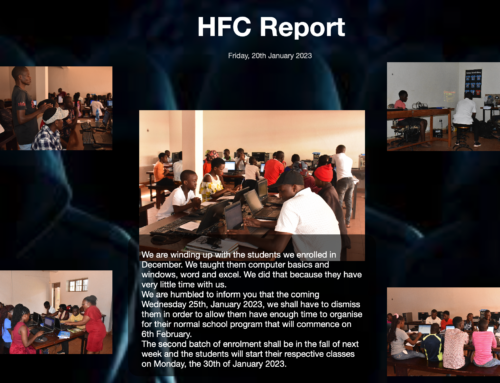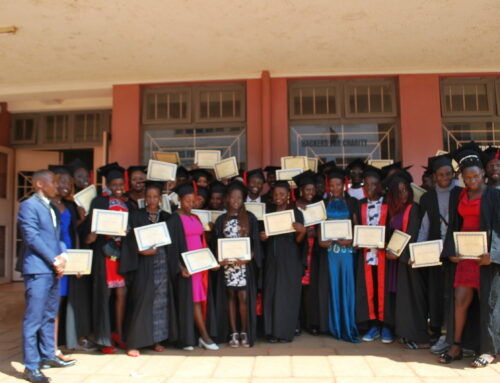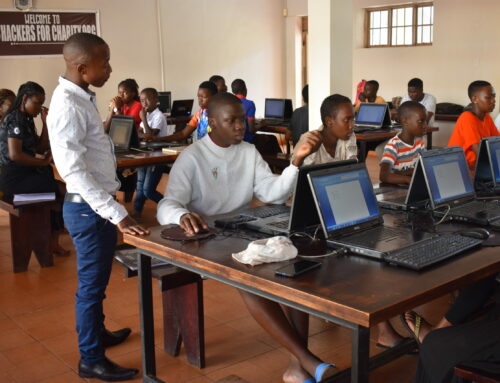 Our computer center at St. John’s was a multi-year, multi-phase project that combined new and used equipment. Much of what we know about computer systems and classrooms in underdeveloped countries we learned while working on this project. This post outlines the first phase of the Wakitaka project and chronicles a lot of the unexpected work that goes into a seemingly simple project. As you’ll learn, the complications are varied and unexpected.
Our computer center at St. John’s was a multi-year, multi-phase project that combined new and used equipment. Much of what we know about computer systems and classrooms in underdeveloped countries we learned while working on this project. This post outlines the first phase of the Wakitaka project and chronicles a lot of the unexpected work that goes into a seemingly simple project. As you’ll learn, the complications are varied and unexpected.
History
In May 2008, I met with Honorable Migereko (Now Chief Government Whip in the Parliament of Uganda). I was speaking at a conference in South Africa, and I flew up to Uganda meet with him. He shared that he liked what we were doing in Uganda and asked if we would be interested in helping him build computer labs in some of the “poorest of the poor” schools in his home district. Hon. Migereko is a very prominent figure in the Ugandan government, and people very much respect him. He struck me as a good guy. But I remember thinking that if a man like this wanted computer labs, he could push the Easy button in the government and make it happen.
But his request wasn’t an official one. I didn’t get the sense that he was talking to me as a government official. I remember him saying that he had committed to providing computers for these schools, but had been “unable” to do so. No, this wasn’t an official request–it was a personal one.
But it was a daunting task. I didn’t have any computers laying around. Even if I did, I had no idea how I would get them into the country. I had the vague feeling that Hon. Migereko might help with this, but something about calling him up and asking, “Hey, D. How am I gonna pull this off?” felt wrong.Not only that, even if I had computers and got them to Uganda, I was out of vacation time. I had burned it all in a three week trip to Uganda in March, and the only reason I was able to fly to this meeting was because I piggybacked it onto a paid speaking gig.
For whatever reason, I felt led to accommodate Hon. Migereko.The next day, my good friend Sam Tushabe drove me to St John’s. I fell in love with the place.
Nestled in the hills above Bugembe, on some of the prettiest land I’ve ever seen, St John’s was a haven. The staff was friendly and courteous and they showed me their computer room.
It was a tiny little building that served as the staff room. It looked quaint and cheery from the outside, but inside, it was a dank, dirty little cave. Nothing more than a closet to my eyes.
I think that little closet was a deciding factor to me. I would see that little closet become a real computer lab. I made a commitment to Hon. Migereko. I told him “I would do my best”.
I left Uganda with all sorts of ideas. I crunched numbers, convinced that I would pay for used equipment in-country. I got a quote from someone I trusted in Uganda. They told me it would cost $200 for a used Pentium 4 with a 15″ CRT. I multiplied this by ten computers, and on paper it would cost $2,000 to build a computer lab. I tacked on an abribrary $1,000 for other expenses in the room (uhmm.. power strips and uhmmm… other stuff). I had no clue what I was doing.
Money isn’t everything.
A year later, in June of 2009, I quit my job to take a stab at running Hackers For Charity full-time. My family and I relocated to Uganda, and I had $3,000 of HFC money in my pocket with St. John’s name on it. I went to visit St John’s. I met with the headmistress and other members of the school staff. That meeting was an interesting one.
It turned out they had been expecting me. They heard a computer lab was coming, so they had started walking their senior students 5km to a computer center to begin acclimating themselves to computers. My heart sunk. I wondered what they had heard, exactly. I wondered if they realized that a year ago, their donor had a full-time job and a family to support and that he lived in the U.S. and oh by the way, his big-shot American organization was like flat broke. I wondered if the bit about “I’ll do my best” was lost in translation. As I gazed into the eyes of the headmistress, I discovered what it was. They were just excited about the prospect of finally getting some computers.
As we sat and chatted, I had other realizations. The first was that this was no small school. There were over 1,200 students. The second was that ten computers was nowhere near enough. I casually asked how many students would be in the computer class at one time. They answered, “30”. I nodded knowingly. I know I must have looked exactly like Chevy Chase when he does his signature knowing nod. And I felt a bit like a Chevy Chase character at that moment. I’d come in all proud to deliver this highfalutin newfangled-comPUter lab and it wasn’t even close to what they needed. Then the question came.
“So how many computers are we to expect?”
Douglas Adams (“Don’t Panic”) didn’t come to mind. I just couldn’t say the word “ten”. But I only had like $3k to spend, and the truth was, I didn’t have any computers. But a friend of HFC had donated 50 used, tested Pentium 4 laptops. So I split the difference and said, “twenty.” This was twenty more computers than I had in hand. The polite argument was inevitable. They very humbly submitted that there were thirty students in a class. Sharing was impractical, as was breaking the class into groups.
Then, there it was. “I think we can do thirty laptops for you.”
The response was unexpected. “Laptops? We had heard they were desktops.”
They were supposed to be desktops. But I’m not sure where they heard that I was secretly plotting to bring them desktops. The discussion that followed would be repeated again and again as I worked with more schools. In Uganda, laptops are generally ancient, underpowered, temperamental boat anchors. They’re fed dirty power (which kills the delicate batteries and power supplies) and the harsh environment (and lack of TLC) make boat anchors out of them in record time. I explained that these were “strong” laptops (Ugandan for “powerful” and “good”) and that they wold outperform most desktops here. They countered that laptops are a lot harder to repair than desktops and that it’s a real challenge to find parts. I countered that laptops drew much less power and could be run off of a generator or solar power if need be. They countered that flat screen monitors could be too. I countered that there wasn’t enough money for flat-screen desktops.
This was a very friendly and quite revealing discussion, peppered with lots of we-are-most-gratefuls and we-thank-yous. They were humble and very appreciative of what we were doing, but they were also very interested in making our investment in their school last as long as possible. I left with a commitment to at least provide 30 laptops, and that “I would try my best” beyond that. I had over committed as it was. I wasn’t about to over-over commit.
Laptops to Uganda
At that point, I contacted our laptop donor and found that the machines were imaged and ready for pickup in Maryland. I put out an APB for someone to help us with cargo shipping. Chris Duke at Navis in North Carolina (http://www.gonavis.com/nc1030) volunteered to help us if we could get the laptops to him. I contacted my buddy Nathan and he agreed to go and pick the laptops up from Chris. We still had a missing link, though and had no way to get the machines from MD to NC. The cost of shipping the machines to Uganda was going to be bad enough without shipping them down the East Coast. I was at a loss.
I tossed up a few haphazard prayers about the situation, but my primary response was to dig in. I sent emails, I pushed on my network, I did just about everything. I was disappointed, and frantic. I was about to give up when Nathan emailed me.
He had planned a vacation to North Carolina some time back and it turned out that he could drive the laptops down to Chris for cargo shipping to Uganda. Coincidence?
Nathan drove the laptops, Chris shipped them (and refused payment) and it entered the pipe to get cargo shipped to Uganda. I was confident the shipment would arrive. I lie. (See http://www.hackersforcharity.org/long-journey/owned-or-not-crap). But this shipment arrived. Three 6-hour round trips to Entebbe later (insanity… third-world psycho drivers here. Really. Bad.) we have our laptops!
Because we’re short some power supplies, we’re only able to install 20 laptops right now, but the other ten will be desktops. More on that later.
It took a ton of work, a few minor miracles and a network of supporters and donors but I’m proud to present my journal entry from the two-day installation, and the photo gallery of the first phase of the Hackers for Charity computer lab at St. John’s Wakitaka Secondary School in Bugembe, Uganda!
[nggallery id=12]












Awesome. Just awesome. I’m glad it all came together.
–tim
WoW awesome pictures! Love how it turned out just like the sketch-up.
Where can we get those wallpapers!
I’m thinkin’ … johnny.ibuildschools.com lol
Good work Johnny :)
Your contact link does not work, I wanted to mail you with regards to HFC. How do we mail HFC or you
I am soooooo excited to see this coming together. God is so good! Praying for you all.
In Him,
Amy T
Good job Johnny !
Btw, did you plan to run the school on windows ? isn’t it more interesting on linux ?
Keep up the good work !
M
Absolutely amazing! Sometimes being water is a good thing…it all depends upon your perspective!